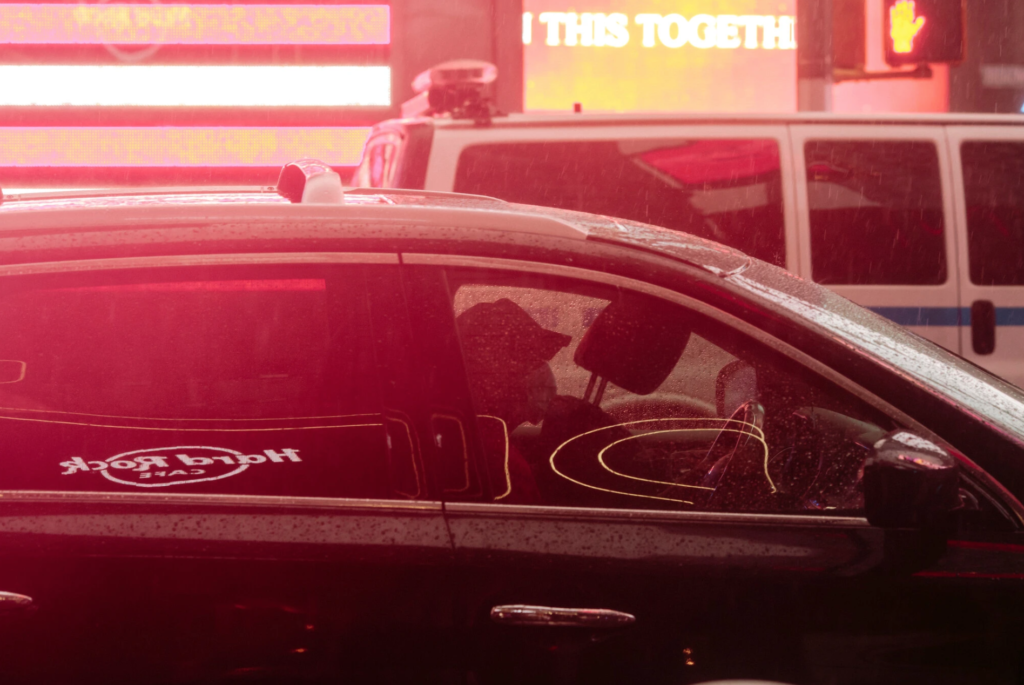July 15, 2021
They zipped around New York City on bikes, bringing restaurant meals to customers too fearful to venture out. Others drove for Uber and Lyft, ferrying different passengers, never knowing if they might be risking their health.
Throughout the pandemic, gig workers have been considered essential to helping New York function even as many residents sheltered at home. People who lost jobs during the pandemic took on gig work as a way to make some money.
But despite that, many gig workers say they are left too vulnerable to the coronavirus and have not been fairly compensated.
Though the minimum wage in New York City is $15 an hour, many residents who work for app-based services like UberEats, DoorDash and Lyft earn less than half that and cannot pay rent and other expenses, according to surveys of gig workers in the city. But a large share are immigrants, many of them undocumented, who feel they have few other options, the surveys show.
“The face of this work force has changed significantly and become predominantly immigrant,” said Maria C. Figueroa, director of labor and policy research at the ILR School at Cornell University.
Ms. Figueroa, who conducted a survey of more than 500 gig workers in the city this spring, said many immigrants lost jobs in restaurants, stores and construction last year and turned to making deliveries for app-based companies. “We asked them, why did you take this job?” she explained. “They said this was the only job available.”
After factoring in the costs of buying their own smartphones, electric bikes and other gear, delivery workers in New York City were earning between $6.57 and $7.87 per hour, not counting tips, Ms. Figueroa said. She said tips were excluded because of their unpredictability in a system where gratuities often go directly to the app company and workers often complain that they are shorted.
“There are a lot of cases of irregularities in the payment of tips,” she said.
Ms. Figueroa cited the example of a worker named Jonan who was promised a $70 tip for delivering a large order of bagels and coffee to an office building in Manhattan last month. “He received $2.50 from the app,” she recounted, and got no more even after appealing to the restaurant and the app’s worker center.
One of the main appeals of gig work is supposed to be the flexibility; it allows workers to set their own hours and work part time to earn money on the side. Many New Yorkers seem to rely on gig jobs to make ends meet.
A separate survey of gig workers conducted last summer by the Community Service Society of New York, an anti-poverty group, concluded that about one-fifth of all employed New Yorkers were involved in gig work to some degree. That is a higher share than the society had estimated in 2019 and, it says, higher than the estimates of government agencies, which generally do not exceed 10 percent.
Most app-based workers said gig work was their primary source of income, though most said they would prefer to have permanent, full-time jobs, said Debipriya Chatterjee, senior economist for income inequality at the Community Service Society and one of three authors of a recently released report on the findings.
“Gig work is not just a side hustle for New Yorkers,” she said.
The society’s survey also found that gig workers were “significantly more likely” than regular employees to have suffered health and financial problems during the pandemic, Ms. Chatterjee said. More than one-third (38 percent) of gig-based workers reported that they or a family member had been infected with Covid-19, compared with about one-fourth (26 percent) of regular employees, she said.
Pedro Acosta, a longtime driver for Uber who lives in East New York, Brooklyn, said he stopped driving for two months last year after contracting the virus and having trouble breathing.
Mr. Acosta, 53, a married father of six, said, “Everybody in my family had the virus,” including his mother, his brother and his three sisters. A brother-in-law sought treatment for Covid and “never came out of the hospital” before he died, he said.
During his hiatus, Mr. Acosta said he “begged for food” for the first time in his working life at a food pantry operated by a church near his home. He also had to defer his rent payment for a while last year.
A spokeswoman for DoorDash called the findings in the surveys “flawed and misleading’‘ and added that “nationally, Dashers earn over $25 per hour they’re delivering and $33 per hour in Manhattan.’‘
Still, food and housing insecurity are bigger problems for gig workers, Ms. Chatterjee said, citing findings of the survey, which was part of an annual report issued by the Community Service Society. This year, it included questions about gig work, given the growing presence of app-based services, including for-hire vehicles, personal shopping, and food and package delivery.
Nearly half of gig workers said they worried all or most of the time about meeting their expenses, compared with less than one-fourth of regular employees, according to the survey. By last summer, 43 percent of app-based gig-workers said they had fallen behind on their rent or mortgage payments, compared with just 17 percent of regular employees.
Gig workers were also more than twice as likely as regular employees to lack health coverage, to have struggled to fill a prescription or delayed medical care, Ms. Chatterjee said. More than half of gig workers reported having at least three hardships — health, housing or food — during the pandemic, compared with less than one-quarter of regular employees, the survey found.
Navara Campbell, who lives in northern Manhattan, said she had repeatedly been robbed while working for app-based delivery services, including Amazon. She said she quit one gig because it involved pushing heavy items like cases of bottled water on a cart through city streets.
Working conditions at app-based services have been the subject of much debate among lawmakers in New York and across the country.
In California, a law known as AB5 went into effect in early 2020 requiring many gig workers for app-based businesses like Uber, Lyft and DoorDash to be reclassified as employees rather than independent contractors.
But Uber and Lyft refused to comply and funded a public referendum that was approved by voters and exempted drivers like those working for those companies from some mandated employee benefits while granting them other protections.
Lyft has set up political action committees in New York and Illinois to head off legislation similar to California’s that would force app-based companies to classify their drivers as employees, qualifying them for all the benefits regular employees receive, such as workers’ compensation and paid sick leave.
In Albany, bills have been introduced that would address some of the concerns of worker advocates, but a proposed bill that would have allowed gig workers to organize got bogged down before the latest session ended. That bill, which had the support of some of the big app companies, was controversial because it could have pre-empted protections granted to gig workers at the local level.
The New York City Taxi & Limousine Commission adopted several years ago a minimum wage of $17.22 an hour, after expenses, for yellow cabdrivers and drivers for ride-hail apps. A set of bills pending in the City Council would provide several more protections for delivery workers, including a minimum wage and faster payment from the apps.
Cesar Vargas, deputy chief of staff for Councilman Carols Menchaca, one of the bills’ sponsors, said they had support from Speaker Corey Johnson and were being discussed with representatives of the app companies.
But some gig workers are not sure that their situation would improve if they were reclassified as employees, with bosses setting their schedules for them.
“I love being an independent contractor and I will fight for it,” Mr. Acosta said. One of the best aspects of driving for Uber, he said, was that it allowed him to take one of his children to school or to a medical appointment without losing an entire day’s pay.
And his earnings from Uber have recently been boosted by a shortage of drivers and the financial incentives Uber has offered to try to entice drivers back onto the streets, allowing him to support his family.
“Right now,” he said, “it’s good because a lot of drivers are not working.”

